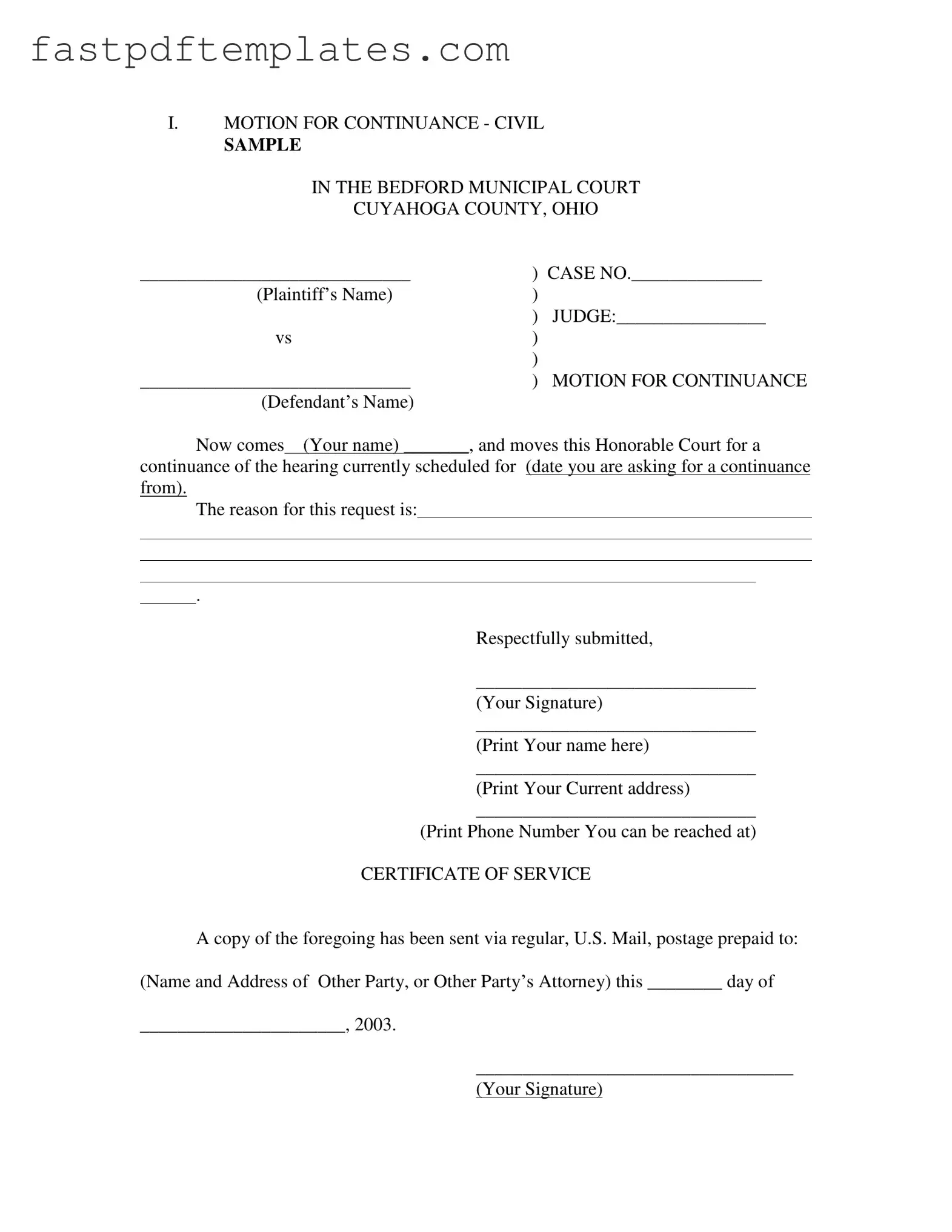I.MOTION FOR CONTINUANCE - CIVIL
SAMPLE
IN THE BEDFORD MUNICIPAL COURT
CUYAHOGA COUNTY, OHIO
_____________________________ |
) CASE NO.______________ |
(Plaintiffís Name) |
) |
|
|
) |
JUDGE:________________ |
vs |
) |
|
|
) |
|
_____________________________ |
) |
MOTION FOR CONTINUANCE |
(Defendantís Name)
Now comes (Your name) _______, and moves this Honorable Court for a
continuance of the hearing currently scheduled for (date you are asking for a continuance from).
The reason for this request is:
.
Respectfully submitted,
______________________________
(Your Signature)
______________________________
(Print Your name here)
______________________________
(Print Your Current address)
______________________________
(Print Phone Number You can be reached at)
CERTIFICATE OF SERVICE
A copy of the foregoing has been sent via regular, U.S. Mail, postage prepaid to:
(Name and Address of Other Party, or Other Partyís Attorney) this ________ day of
______________________, 2003.
__________________________________
(Your Signature)

